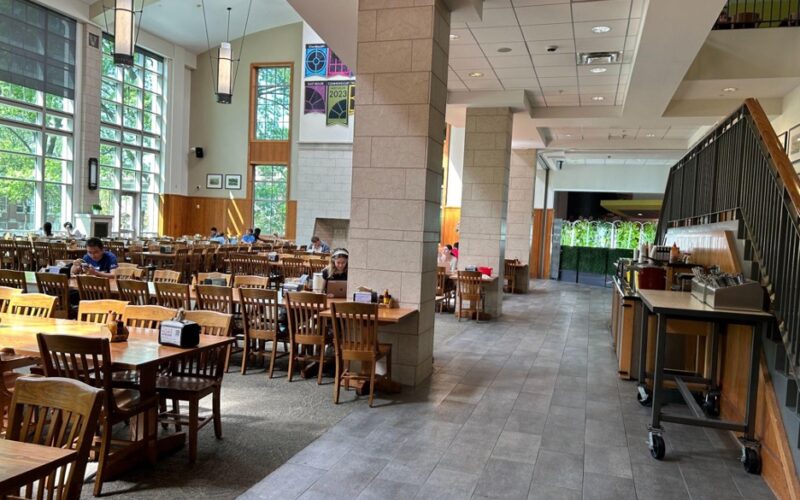Ron Ye Photo
Ever wondered why some Vanderbilt students bypass the unlimited plates at the dining hall for a single meal swipe option? Vanderbilt offers two types of dining where students can sit down and enjoy a meal. On the Campus Dining website, the two types are labeled as “Residential Dining Halls” and “Retail Dining”. Residential Dining Halls include Commons, E. Bronson Ingram, Nicholas S. Zeppos, and Rothschild Dining Center. Retail Dining includes 2301 Allergen Free, Kitchen at Kissam, Rand Dining Center, and The Pub at Overcup Oak.
The difference? Residential Dining Halls are “all-you-care-to-eat”. At most of these locations, you are able to swipe once, eat as much as you like, and stay for however long you want or can (the bathrooms are located outside of the dining hall). Commons is a unique Residential Dining Hall as there is a 45 minutes time limit. In comparison, at Retail Dining locations, there is a limit of an entree, side, and drink. You can’t go back to get more unless you swipe again.
Despite multiple attempts, Campus Dining did not reply to requests for comment on why there are two types of dining styles in Vanderbilt. So instead, we will turn to students themselves to see if we can find the answer.
What do students think?
The Vanderbilt dining system raises many questions. Do students prefer a Residential Dining Hall or Retail Dining? What makes Retail Dining remain attractive when there are all-you-care-to-eat options? What influences a student’s choice of dining?
To answer these questions, I interviewed a few students on their opinions. When asked about his preferences between Residential Dining Halls and Retail Dining, Junior Harrison Zhang, shared that his choice really “depends on the food.” His favorite locations are 2301, The Pub, Rothschild, and Commons. He noted, “2301 is good, but it’s unrealistic to have that [as] all-you-can-eat.” He appreciates the all-you-can-eat model because “people eat different portion sizes.” He then reflects, “but I suppose people can always re-swipe from the excess swipes we always have.” When discussing The Pub, he emphasized its uniqueness, stating, “it’s the one dining place that is fundamentally distinct from all others.”
“I think that the one meal one swipe locations are higher quality, but I sometimes find myself using multiple swipes to get what I want to eat.”
Skyler Shipp, Junior
When asked about their preferences between Residential Dining Halls and Retail Dining, Junior Skyler Shipp says “I think that the one meal one swipe locations are higher quality, but I sometimes find myself using multiple swipes to get what I want to eat. They also sometimes get boring because the options change less, but they are still the highest quality food in my opinion.” His favorite locations are Rand, The Pub, and Commons. When asked why he liked Commons, the only Residential Dining Hall in their top three locations, Skyler replied with “I think it has pretty good variety.”
Conclusion
Although Residential Dining Halls seem like a better option due to being all-you-can eat, Retail Dining is most commonly chosen as the best dining options by students. This seems to be due to the fact that students believe that Retail Dining offers higher quality food when compared to Residential Dining Halls. Residential Dining Halls are seen as lesser in quality but offer more variety and the freedom of all-you-can-eat. Whether or not this perception of quality is true is uncertain. In the eyes of students, the tradeoff between Retail Dining and Residential Dining Halls is of quality versus quantity. Although deciding where to eat might be trivial to you, your choices shape the Vanderbilt dining system, making every swipe and every meal a vote for how the school offers dining.




